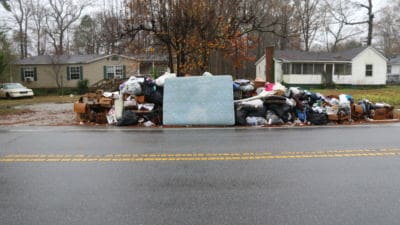I recently spoke to a handful of young women at a high school in North Carolina who had taken an international test that is getting a lot of attention–the PISA, a test taken by half a million 15-year-olds in 69 countries.
Tanatswa, Keshal, Anisha and Hope understand something that seems to elude a lot of adults, even the ones who say they understand the value of a world-class education: These results matter, and they say a lot about how teenagers are being taught in the United States.
These students happen to go to a high school that signed up to take a version of PISA (called the OECD Test for Schools), which allows high schools to measure whether their students are truly capable of deeper thinking and problem solving–skills these students know they will need to master if they want to succeed in college and compete in a global economy.
Global success might be an illusory goal if today’s PISA results are any indication. “Lackluster…Losing ground…Mediocre…Below average… Treading water.” Those are just a few descriptions of how the United States performed compared to other nations, notably among other wealthy developed countries.
U.S. students ranked No. 35 in math, down from No. 28 in 2012, among the 60 nations whose students took the Program for International Student Assessment in both 2012 and 2015.
Our nation did a little better on science–we ranked No. 18, up from No. 21 among the 60 countries that took the exam in both 2012 and 2015–and reading scores put American students at No. 15, up from No. 18 on the 2012 exam.
Still, is treading water in two subjects anything to celebrate–especially when you consider that the United States is among the biggest per-student spenders on education worldwide?
In writing about this, I’m ignoring this reality: Many parents aren’t swayed by international rankings at all. They don’t trust tests. Or they don’t want our schools compared to those in Finland or Canada or China or Estonia or South Korea. Because most parents believe their schools and teachers are just fine. The problem is low-scoring children living in poverty. Or too-big class sizes. Or teachers who don’t know how to use high-tech gadgets.
Alas, none of that turns out to be true. As Amanda Ripley, author of The Smartest Kids in the World, explains in The New York Times:
Some of the other reforms Americans have attempted nationwide in past years, including smaller class sizes and an upgrade of classroom technology, do not appear on the list of things that work. In fact, there is some evidence that both policies can have a negative impact on learning.
For now, the PISA reveals brutal truths about America’s education system: Math, a subject that reliably predicts children’s future earnings, continues to be the United States’ weakest area at every income level. Nearly a third of American 15-year-olds are not meeting a baseline level of ability — the lowest level the O.E.C.D. believes children must reach in order to thrive as adults in the modern world.
And affluence is no guarantee of better results, particularly in science and math: The latest PISA data (which includes private-school students) shows that America’s most advantaged teenagers scored below their well-off peers in science in 20 other countries, including Canada and Britain.
Buried in this year’s results was one truly encouraging sign around equity: When it came to closing the gap, our disadvantaged students outperformed disadvantaged students from other nations, notably in science.
Which brings me back to my conversation with Tanatswa, Keshal, Anisha and Hope from Research Triangle High School in North Carolina–the four seniors who were randomly selected as sophomores to take a low-stakes exam they had never heard of.
These students weren’t thrilled about taking yet another standardized test, but they did recall and appreciate one key distinction: This exam did not measure what they’ve memorized. Rather it asked them to analyze data deeply, solve problems they haven’t seen before, and explain their reasoning in compelling written arguments.
In short, the test measured how they were really learning in their classes at their diverse STEM-focused high school, and that’s why their school was using the results of the test to empower students and deepen instruction.
Research Triangle first took the PISA-based test in 2013, and when scores came back as “just average” and disappointing for their lowest performers, the school doubled down on its independent deep-learning model, shifted the strongest teachers to students who needed the most support, and rolled out a mentoring program.
When the school took the test again in 2014, the improvements were eye-popping–if the school was a nation, its score would have ranked second in the world in science and fifth in math.
The four students said they were proud of themselves, but mostly they were proud what it says about their school and their teachers’ commitment to challenge all of their students, especially the ones who struggle to work independently.
There are lessons in here for parents who are quick to dismiss the importance of this test, or any test that doesn’t cast their school in the brightest light. And there are lessons in here for high schools, who want to rise above average and are brave enough to acknowledge that they need to get better at preparing students to succeed in a new world.





